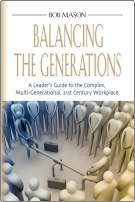 Send to Kindle
Send to KindlePodcast: Play in new window | Download (7.9MB)
Can’t Find Qualified Workers? Try This
I’ve been noticing something very interesting happening lately. At a time when unemployment is higher than it’s been in over 20 years, companies are complaining that they can’t seem to hire workers. They’re looking for specific skills and abilities and workers with those skills just don’t seem to exist. Some people suggest we should have a government program to retrain workers and give them skills that would make them more attractive to potential employers. I’m not a big fan of government programs, especially as they relate to business. I think there’s another way to approach this issue.
First consider what it’s costing you not to have someone in that position. Face it; we hire people with the express purpose of them giving back to the company. We hire people so they can further the company’s mission. That means that all the time that position is vacant, you’re losing money. Because there’s nobody there doing the job that will make money; that will improve your bottom line. On top of that, you have another expense. That’s the expense of recruiting, trying to find someone to fill that position. When you add it up and consider the amount of time that position is vacant, you’ll find you’re losing a lot of money.
Now compare that cost to the cost of actually training somebody to have the skills and abilities you’re looking for. I understand you can’t always train somebody to have the years of experience, but while you’re waiting for those years of experience, those costs are adding up. Wouldn’t it be better to find someone who has similar skills, but more importantly is enthusiastic, will be a good worker, will benefit your company, and then train them in the skills and abilities you’re looking for? Compare those two costs and I think you’ll see that training someone for the new position is actually a cheaper way to go. Besides, when you train your own people, you know they learn things you want them to learn the way you want them to do it.
You can wait for a government program, and it might happen, but in the time you’re waiting, think about how much money you will have lost.







